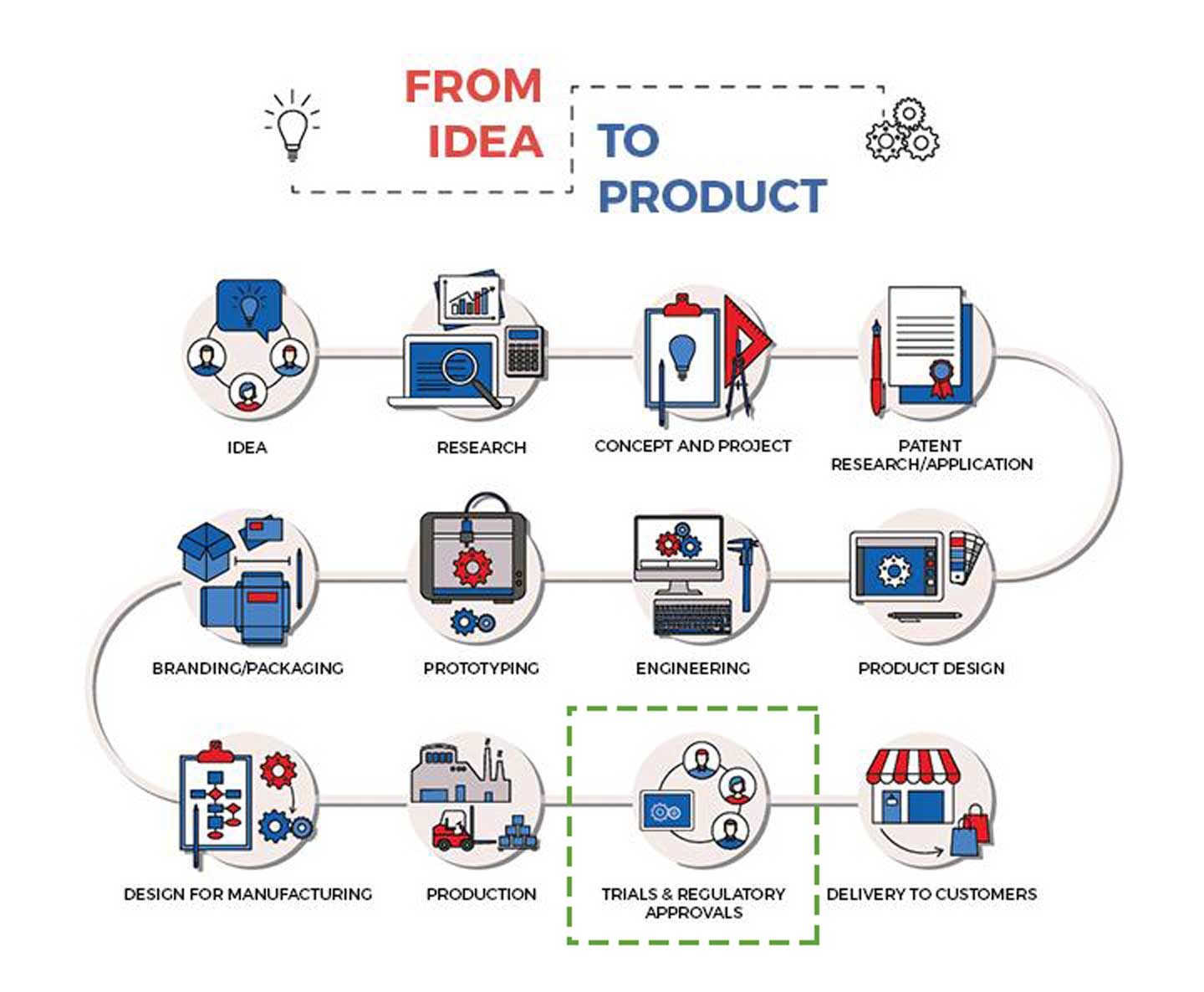Benefit and risk assessment
In this blog series, we deep dive into each stage of the idea to product lifecycle, from identifying a problem and formulating an idea through production and marketing. In each post, we’ll focus on one of the twelve unique aspects of the cycle and its impact on the end product.
Stage 11 of 12: Trials and Regulatory Approvals

Most products will go through a trial and regulatory approval phase, whether to determine if they are safe for consumers, ensure their proof of concept, or simply determine which age group they are suitable for. The trials should conclude if the product effectively addresses the previously identified problem and provides a benefit to the target market.
This stage of the idea to product life cycle is most prominent in industries that produce products such as cosmetics, pharmaceuticals, etc. Your product may not fall into any of the FDA regulated categories, but it may still be necessary for your product to undergo trials and approvals to prove its efficacy and assess any risks it may present to users. There may also be other regulatory agency standards that your product must meet instead.
Benefit and risk assessment
Pharmaceutical products can often get stuck in this regulatory stage as a result of the strict regulations of the FDA, and while this may be seen as a detriment to progress, the goal is to ensure that the products are safe and appropriate for consumers. The pharmaceutical industry is very political, and perhaps too complex of a system for our purposes, but it is a useful example of processes to assess efficacy and risks.
Pharmaceutical products must go through many trials to determine their benefits and risks. In these trials, a variety of people, both healthy and not are exposed to the product to assess its uses and side effects. With your own product, you should employ user trials to conclude your product’s proof of concept, if it does what it is supposed to, and whether it can be used in any other applications. Pharmaceuticals are regulated by the FDA, whereas other consumer products are overseen by the Consumer Product Safety Commission (CPSC) to ensure the safety of consumer products. Hopefully, no significant risks will present themselves, but if they do, you’ll need to fix them, which may mean going way back in the idea to product lifecycle. If these problems are not addressed before the product goes to market, the CPSC could recall it. Hopefully, your problem isn’t that the product fails to solve the identified problem altogether.
Trials and regulatory approvals will also help you to avoid the trap of false advertising. If you say your product does one thing, and it actually doesn’t, you can be sued. The Federal Trade Commission regulates product advertising to ensure that consumers are protected from “deceptive or fraudulent practices in the marketplace.” Marketing studies, which you can consider a subset of trials and regulatory approvals, will allow you to identify your market more specifically and determine how to best market your product to consumers.
























